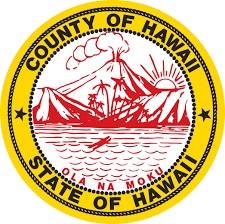The Hawaii County Council voted Wednesday in support of a resolution to seize through eminent domain portions of a Papaikou property containing a trail to Mill Beach.
For more than eight years, the county has attempted to obtain a switchback trail leading from the end of Mill Road in Papaikou to the nearby beach. Surrounding residents claim the current owners of the property are illegally restricting access to what should be a publicly accessible beach.
During their Wednesday meeting, council members voted unanimously in support of a resolution that would use the process of eminent domain — the power of a government to seize private property for public use, with compensation — to take control of the trail.
This is the second attempt by the county to take the trail via eminent domain. In 2012, the council voted in favor of another resolution to obtain the trail, but the lawsuit that eventually stemmed from that decision — which was filed in 2017 — was dismissed earlier this year.
“Speaking as a surfer … it’s disappointing that the court’s bouncing this back to us,” said Puna Councilman Matt Kaneali‘i-Kleinfelder. “It was a failure on many different levels.”
During a council committee meeting earlier this month, Corporation Counsel Joe Kamelamela advised that revising the civil suit would be less time consuming than filing an appeal.
Neither the current owners of the property, James Waugh and Charlene Prickett, nor any of their representatives spoke during Wednesday’s meeting. However, a handful of public testifiers commented in support of the resolution, saying their legal rights are being curtailed by the owners.
“The property owners deserve credit for maintaining the trail,” conceded Hilo resident Cory Harden. “But they have also had people arrested for being on the trail after hours.”
Beachgoers are able to access the beach via the trail, but a gate on the trail is only open for about 12 hours a day and is locked at 6:30 p.m. Opponents of the property owners also claim the trail is closed outright at least once a year.
Because state law guarantees access to the ocean and shorelines, critics of the property owners argue that restricting access to the trail — the only significant public point of ingress to the beach — is a violation of their state-protected rights.
For their part, Waugh and Prickett have previously said that unrestricted public use of the trail has led to vandalism in the past and infringes on their right to the quiet enjoyment of their property.
While council members Wednesday were in broad agreement about the resolution, Council Chairman Aaron Chung wondered aloud whether eminent domain is the most effective vehicle to restore public access to the beach.
“I’m in full support for whatever gets this done,” Chung said. “But we’ve been doing this for eight years already, and we could be doing this for eight more.”
Kamelamela said during the meeting that, while the county could seek to have the trail defined as a prescriptive easement — a mechanism whereby the owner continues to own the property, while others gain the rights to use it — it could be just as time consuming as the eminent domain process.
In any case, Kamelamela added, the eminent domain process does not preclude the county from attempting other methods to gain access to the trail.
Eminent domain could be costly, however. An appraisal by the county valued the trail at $38,500, which Prickett and Waugh are not bound by law to accept.
The council ultimately voted unanimously Wednesday in support of the resolution, although it requires a second reading before it can be passed.
Email Michael Brestovansky at mbrestovansky@hawaiitribune-herald.com.






